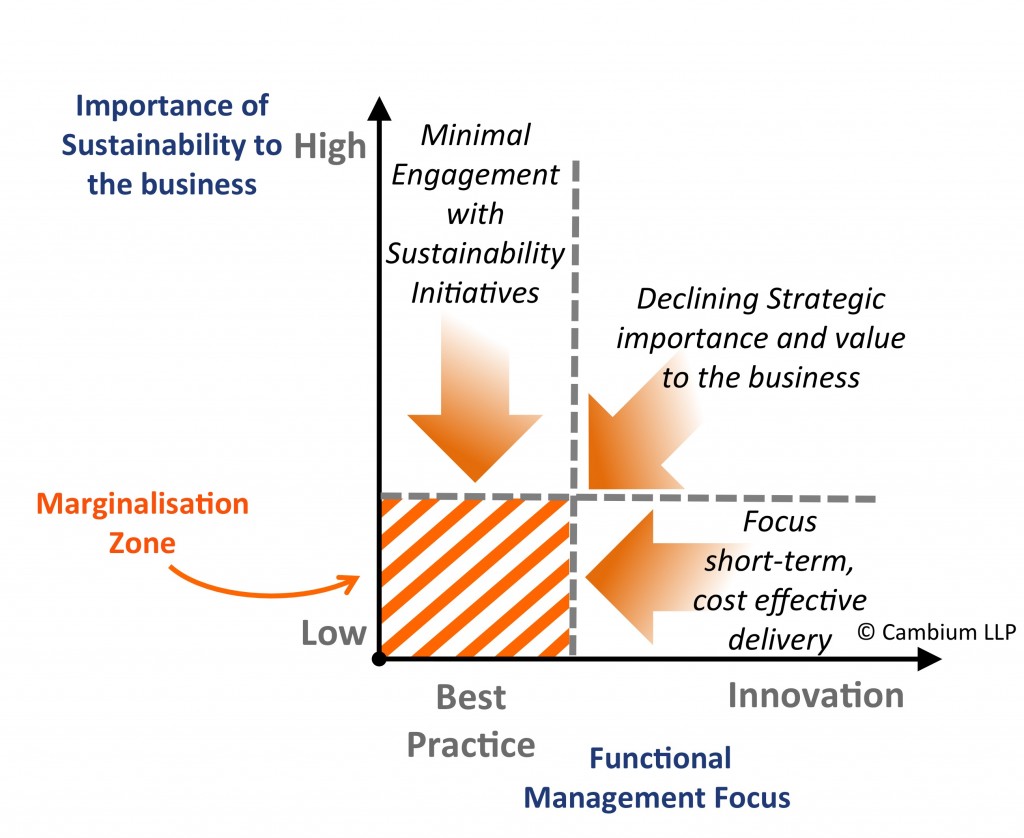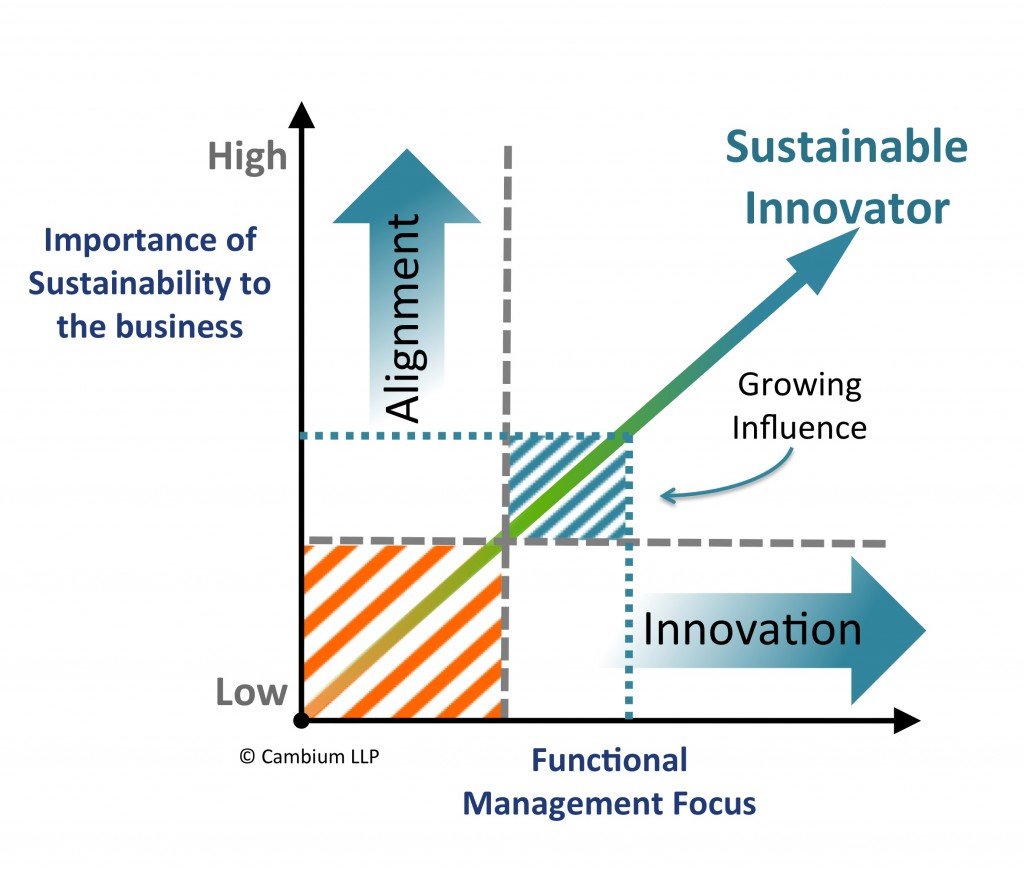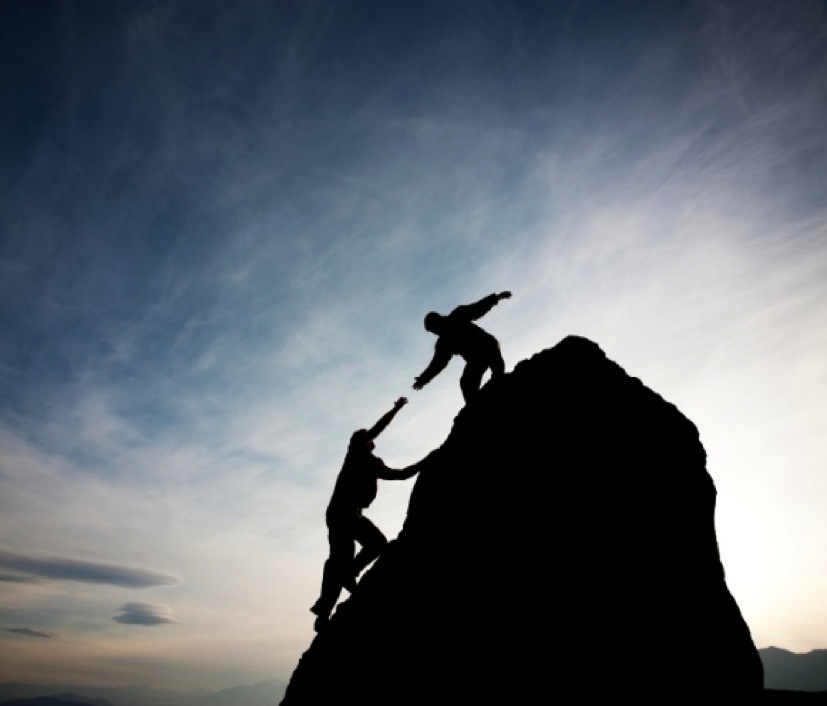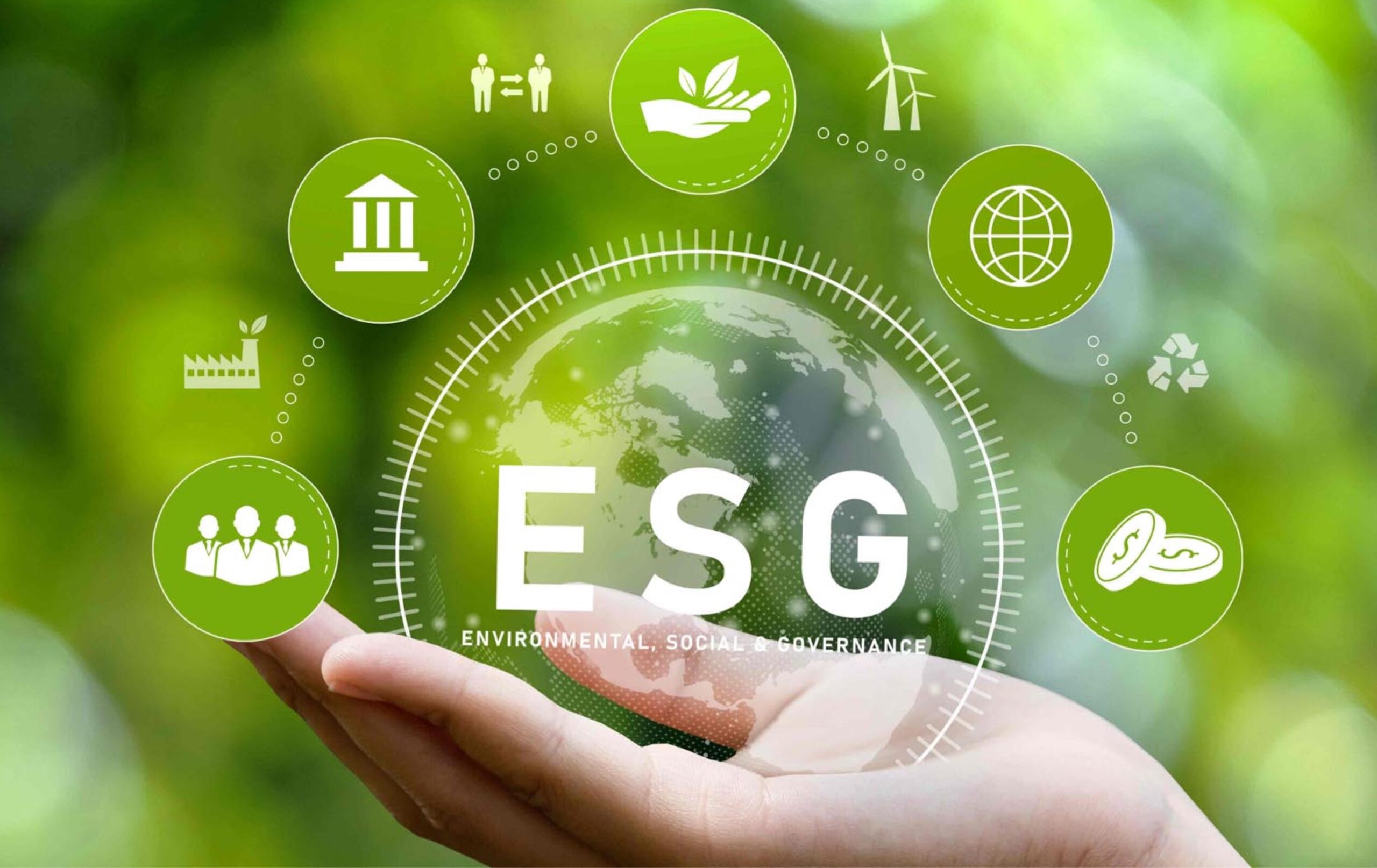The leaders of key business functions, such as IT, Facilities, HR that provide valuable supporting services to the rest of the business face many challenges. Doing more with less, recruiting and retaining key talent, while continuing to deliver value and innovation to the rest of the business. Demonstrating this added value and obtaining the internal recognition they and their teams deserve is a constant battle. In this blog we set out why collaboration is key to sustainability and provide some fresh ideas on how these leaders can use the widespread issue of Sustainability to grow their influence and mitigate the risk of being marginalised by the business.
Mitigating the Marginalisation Risk
Sustainability is vital issue of great interest to the C-Suite catalysed by major global environmental and societal challenges that affect all businesses. Evidence for this trend is widespread. Consequently most organisation’s have important objectives and policies, set by the leadership of the business, which determine the company’s response.
Given this growing interest at Board level the lack of engagement with the Sustainability agenda can create a risk that key business functions can be marginalised. To meet this challenge every function must review its approach to Sustainability in order to ensure its on-going relevance to the wider business and senior management (C-suite). This risk is depicted in the graphic below. 
Becoming a Sustainability Innovator
Given the many short-term pressures facing all functions, Sustainability can often become relegated in importance, compared to the ‘day job’ of delivering business as usual services. For this reason those functions that can step up and demonstrate not only the commitment to Sustainability goals, but also to use them as a driver of sustainable innovation can refresh their perceptions and as a result grow their influence within the business. The potential benefits of this strategy are illustrated by the graphic below.

How well aligned is you function with the business’s Sustainability goals?
Let’s consider progress up the Y-Axis first towards becoming more ‘Sustainability Aligned’.
Clearly a sound understanding of organisational goals and how they relate to the sustainability agenda is essential. For some this might require investment in sustainability education and if possible done in a way that not only deals is highly relevant to the business (as apposed to generic – “we need to save the planet” stuff) but also acts as a catalyst for employee engagement.
Developing this more aligned view of sustainability as it applies to your function also offers the chance to also establish a clear and shared view of sustainability Innovation priorities. From this starting point the function is in a strong position to develop function specific business goals.
Collaboration is key to progress on Sustainability
However working in relative isolation is only likely to get leaders so far. The complexity and extent of the sustainability challenges typically require well-developed cross-functional collaboration. Key to this engagement and collaboration is getting the buy in and support of other core business functions.
It is an opportunity for your function to be a prime mover in engaging and mobilising people cross-functionally to generate ideas and actions for innovation with sustainability goals as the driving force.
Internal collaboration creates an opportunity for ensuring de-duplication of effort and the sharing of best practices, as well as a better appreciation of the importance of Sustainability across the wider business.
The benefits of collaboration are not just restricted to internal engagement.
How to introduce innovation into the business?
To deliver sustainable innovation requires progress along the x- Axis to bring in new innovation to functional working practices. Even with well-developed cross-functional collaboration it is unlikely that all the solutions can be found or generated from within so there is a need to look outside. This of course is not without its challenges raising questons such as:
- Which suppliers can solve my challenges?
- These challenges may beyond a single supplier.
- Do they (the suppliers) understanding my challenges?
- Do new solutions need to be developed?
- What am I willing to share with external agencies
Better alignment with internal sustainability goals will have already begun to identity priority areas for innovation. This prioritisation now also helps establish the scope of where to look for external support. This search may well start with the existing supplier relationships, who themselves may also have to look beyond their established products and services to address your innovation requirements.
Identification of innovative sustainability solutions requires investment on both sides and not all suppliers will be ‘up for’ this level of collaboration. They may want your business, but the level of investment, the perceived risk and the timescale for financial return may just not fit with their business model. This does not make them bad suppliers it just means that they do not want to engage in this way.
A way of working will require shared goals a greater deal of openness and trust on all sides. This can be a difficult journey but can be made easier with use of well-planned and delivered collaboration processes.
Start the journey towards becoming a Sustainable Innovator
So if all of the ideas above sounds sensible, it begs the question as to how and where to start. We are not suggesting that this path is easy, because it not and requires, patience, tenacity and an open collaborative mind-set.
Of course having a trusted guide can help accelerate progress along the journey by helping you to avoid pitfalls. For example by providing deep Sustainability expertise and being able to support the rapid development of new collaborations along the way.
If you are interested in leveraging Sustainability to transform the internal and external perceptions of your team, we would be delighted to discuss your situation and the options available to accelerate your progress.







